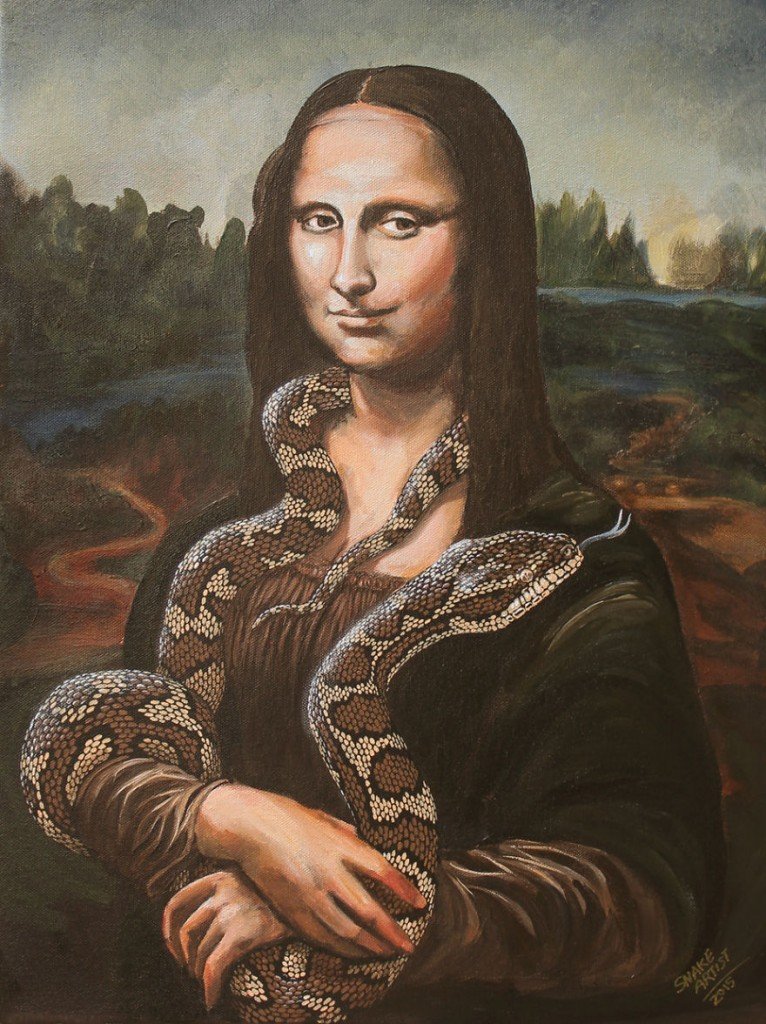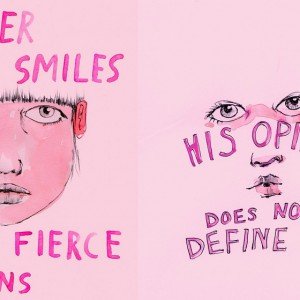From Portrait to Pop Culture: 500 Years of Mona Lisa
The Curious Case of a Smirking Lady
Let’s get one thing out of the way: the Mona Lisa wasn’t always the most famous painting in the world. Yes, Leonardo da Vinci painted her with genius, mystery, and mathematical precision, but she was once just another dusty masterpiece hanging in the Louvre. Then, in 1911, she vanished—and all hell broke loose. What followed was part true crime, part marketing miracle, and a masterclass in how myth, media, and a dash of melodrama can elevate a portrait from acclaimed to immortal.
In this deep-dive, we’ll trace the journey of how the Mona Lisa—through one audacious theft, a parade of pop culture cameos, and centuries of speculation—became an icon. This is not just the story of a painting. It’s the story of how a smile conquered the world.
A Quiet Life Before the Headlines
Before the infamous heist, Mona Lisa lived a relatively quiet existence. Leonardo da Vinci painted her around 1503, likely commissioned by a wealthy Florentine merchant named Francesco del Giocondo (hence the Italian name La Gioconda). She entered the French royal collection sometime after Leonardo took her to France, and eventually ended up in the Louvre.
For centuries, art historians adored her—her sfumato technique, her ambiguous expression, her oddly out-of-place eyebrows (or lack thereof). But let’s be honest: she wasn’t exactly a household name. In a Louvre brimming with masterpieces, she was admired but not lionized. She was the painting you walked past on your way to see the Venus de Milo.
Her fame, at this point, was what you’d call “elite niche” at best. Appreciated by connoisseurs, ignored by casual tourists. That was, of course, until one Monday morning when the Louvre forgot to check the broom closets.
The Heist Heard Round the World

On August 21, 1911, an unassuming handyman named Vincenzo Peruggia hid in a broom closet overnight and walked out of the Louvre with the Mona Lisa tucked under his coat. This wasn’t some Mission Impossible-style heist. Peruggia simply took advantage of the museum’s lax security (ah, the early 20th century—how quaint) and walked off with one of the most valuable paintings in history.
Cue the media frenzy. For two years, the Mona Lisa’s disappearance was a global obsession. French police interrogated Pablo Picasso. The New York Times ran headlines. People lined up just to stare at the empty space where she once hung. Tabloids speculated wildly—was it a political statement? A prank? Alien theft?
Peruggia, an Italian nationalist, claimed he wanted to return the painting to its “rightful home” in Italy. Noble intentions or not, his actions sparked what can only be described as the greatest PR campaign in art history.
When the Mona Lisa was finally recovered in Florence in 1913—after Peruggia tried to sell it to an Italian museum—the painting returned to the Louvre not as a piece of art, but as a full-blown celebrity. The world had a new star. And she wasn’t giving interviews.
This theft turned the Mona Lisa into something far more powerful than just a painting: it made her a story. And people, it turns out, love stories way more than brushstrokes.
The Media Circus and Public Fascination
One of the most fascinating aspects of the Mona Lisa’s rise to fame is the sheer power of the media in the early 20th century. The theft of the Mona Lisa happened at a time when newspapers were expanding, literacy was on the rise, and the appetite for scandal was insatiable.
The press treated the theft like the art world’s Titanic disaster: a perfect storm of shock, mystery, and human folly. Headlines screamed about the Louvre’s incompetence. Editorials speculated wildly. Even when there were no developments, newspapers published retrospectives, theories, and even poetry inspired by the missing painting.
This relentless attention implanted the Mona Lisa into the collective consciousness. She was no longer an artwork—she was a cultural figure. People who had never heard of Leonardo da Vinci suddenly knew her name. Or at least, knew her smile.
It’s worth noting that this was also the age of burgeoning celebrity culture. Silent film stars, opera divas, and royals captivated the masses. The Mona Lisa fit right in. She had mystery, beauty, an Italian name, and now, a global scandal attached to her legacy.
The synergy was irresistible.
Entering the Pop Culture Machine
By the mid-20th century, the Mona Lisa was more than a painting—she was a meme before memes were a thing. Salvador Dalí gave her a mustache. Andy Warhol turned her into a technicolor fantasy. Duchamp, that cheeky dadaist, scrawled “L.H.O.O.Q.” under her face and essentially called her a dirty name in French.
And it never stopped.
In the 21st century, she’s been remixed into everything from emojis to Madonna’s music videos to The Simpsons. She’s been Photoshopped, TikTok’d, and memed into oblivion. Her face sells everything from chocolate to security software.
She has been featured in haute couture, bootleg t-shirts, social media avatars, NFT projects, and even poorly-animated YouTube conspiracy videos claiming she’s an alien. The Mona Lisa is both sacred and secular, fine art and fast-food culture—all at once.
Why? Because she’s the perfect symbol: timeless, enigmatic, instantly recognizable. A blank canvas onto which we project our absurdity, genius, and everything in between.
Her fame has transcended the art world and crossed over into the social algorithm. Every repost, every ironic caption, every “Mona Lisa but make it goth” remix strengthens her dominion.
The Anatomy of Enduring Fame

So how does a single artwork, painted over 500 years ago, remain not just relevant but untouchable in the cultural hierarchy? There’s a formula here—accidental, perhaps, but brilliant nonetheless:
- Artistic Merit: Leonardo’s skill is beyond dispute. Her beauty is mathematical, scientific, poetic. The artistry is the seed.
- Mystery: Who is she? Why is she smiling? Is it even a smile? The questions never end.
- Scandal: That theft transformed her into a global mystery. A drama.
- Mass Media: The story went viral before “viral” was a thing.
- Endless Reproduction: From postcards to pixels, she is omnipresent.
- Cultural Parody: When an image becomes flexible enough for parody, it becomes immortal.
It’s a snowball effect of fame, fueled by controversy, mystery, and memetics.
This is why the Mona Lisa isn’t just a painting. She’s a brand. A myth. A mirror reflecting centuries of obsession, interpretation, and projection. And unlike every overhyped pop star or celebrity chef, she’s yet to fall out of fashion.
Fame in the Age of Algorithms
The Mona Lisa’s staying power in today’s digital culture is nothing short of extraordinary. She doesn’t move, doesn’t speak, hasn’t changed in centuries—and yet she’s more viral than half of TikTok.
Let’s get cynical for a second: she is, perhaps, the ultimate algorithm hack. She ticks every box that keeps people scrolling:
- Familiarity
- Mystery
- Visual appeal
- Subtle controversy
- Adaptability across cultures and languages
This isn’t just art—it’s a masterclass in timeless engagement.
What can influencers and brands learn from her? Everything. She never panders, never overshares, and always keeps you guessing. That’s branding gold.
The Philosophy of Obsession
Let’s go deeper. What does our obsession with the Mona Lisa reveal about us?
Why do we idolize a woman whose identity we aren’t even sure of? Why does a passive, silent painting command more respect than many living artists?
Part of it is the allure of mystery. Humans are hardwired to chase unanswered questions. The moment you give us a riddle wrapped in beauty, we’re hooked.
But it’s also about projection. The Mona Lisa is infinitely interpretable. Sad? Happy? Smug? Submissive? She becomes what we need her to be.
She’s not looking at us. She’s looking through us. And that unnerves us. So we try to decode her. And in doing so, we decode ourselves.
The Immortal Smile
The Mona Lisa’s journey from painting to pop icon is not just a story of art—it’s a study in spectacle, storytelling, and the bizarre alchemy of fame. She teaches us that legacy isn’t just earned; sometimes it’s stolen, memed, and mass-produced.
She is the first influencer who never asked for followers.
So next time you see her in the Louvre, behind bulletproof glass and surrounded by iPhones, take a moment to appreciate the absurdity. She’s not just a portrait. She’s a phenomenon. She’s the world’s most famous introvert.
And she’s still not telling you why she’s smiling.









